What's in Your Crawlspace?
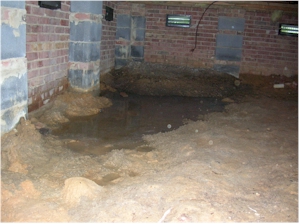
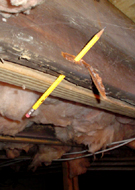

If your answer is mold, bad odors, standing water, bugs or that it is just plain yucky you have a problem, but you've come to the right place and we can help.
"Crawlspaces are the largest single cause of poor indoor air quality and various moisture related problems in your home."
Many of today's contractors that work in crawlspaces take a "one solution fits all approach" At Bugs-No-More, our experience has shown that no two crawlspaces or the problems associated with them are the same. Our goal is to solve your specific problem in the most cost-effective, non intrusive way possible.
Our inspector will explain to you the many problems associated with crawlspaces, by doing a thorough inspection, then he will be able to identify the problems that may be occurring in your specific crawlspace along with many of the solutions we can provide for you. If you would like to know the specific problem with your homes crawlspace .
Call today to schedule a Free Estimate and Crawlspace Inspection
(757) 552-0120
Our Inspection will involve a thorough examination of your crawlspace inside and out We will explain the causes of your crawlspace problems, what can be done to correct them permanently and provide you with a written estimate. This usually takes about an hour.
Studies have shown that as much as 10 gallons of water a day can enter your crawlspace in the form of water vapor. This water vapor travels up through the rest of your house by a process called the stack effect, this moisture can cause additional problems in the upper living spaces of your house.
Hard wood floors can cup and bow, widows will form condensation, additional mold can grow in areas that do not get very much ventilation such as closets and cabinets.
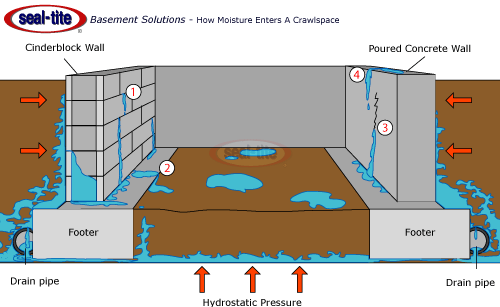
Moisture Control
Proper ventilation and the installation of a moisture barrier are important to preserving the wood foundation and subflooring of your home. Wood damage in homes due to wood-destroying insects and wood destorying fungi - damp rot is a serious problem and causes billions of $'s in damage annually. Bugs-No-More offers three effective ways to reduce the risk of damage: 1. Temp vents 2. moisture barrier
and 3. borate treatment for the wood.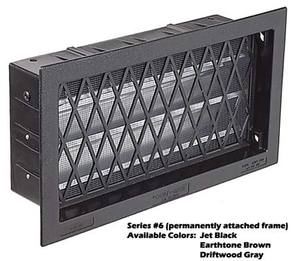
AUTOMATIC TEMP VENT AUTOMATIC TEMP VENT COLORS
1. Temp-Vent
Help protect your foundation with Temp-Vent. The foundation is critical to the integrity of the home. That’s why foundation ventilation is critical. Unventilated foundations are subject to built-up moisture that can eventually lead to costly damage.
Temp Vent foundation vent systems help protect this critical area of the home. What’s more, ventilation can help control conditions that lead to mold, mildew, fungi, damp rot and unhealthy air.
But there’s more.
If there’s one thing termites are attracted to, it’s warm, moist, dead air environments such as those found under houses in crawl spaces or unfinished basements.Temp-Vent foundation vents are designed to provide ventilation that can reduce moisture in these areas, which helps control termites.
A crawl space dehumidifier with no drain or power needed!
Whenever possible, vents should be placed on all sides of the foundation. This will create an intake/exhaust system that delivers a steady flow of air. One vent should be installed for each 8 to 10 feet of foundation wall.
Most building codes require 1 square foot of open ventilation area for every 150 square feet of crawl space. Temp Vent Automatic Foundation Vents have 50 inches of net free area per vent. Therefore, you should install one vent for every 50 square feet of crawl space.
For crawl spaces with polyethylene installed, on 80-90% of the ground, the ventilation requirement changes to 1 square foot of ventilation for every 500 square feet of crawl space with a minimum of 4 vents installed to provide cross ventilation. For crawl spaces with polyethylene, install at least one vent for every 500 square feet of crawl space.
Automatic Foundation Vents
The non-powered, Automatic Foundation Vent will open and close automatically using a heat/cold sensitive coil. The louvers open completely at approximately 72°F and completely close at approximately 38°F. Unlike manual vents that can waste energy when no one remembers to open or close them, these vents self-adjust all year long.
Installation Tips for Automatic Foundation Vents:
The advantages:
- Reduces moisture buildup in the crawl space and thuse reduces excessive dampness and fungus.
- Reduces heating fuel consupmtion by reducing the amount of cold air during temperature below 38°F.
- Helps prevent allergies due to fungus infestations.
- Helps in prevention of frozen pipes
- Removes the problem of human error in opening and closing ventilators.
- Beautifies the exterior of home

2.Moisture Barrier
The installation of a moisture barrier and proper foundation ventilation are important to preserving the wood foundation and subflooring of your home.
The installation of a moisture barrier in the crawlspace will cause soil moisture to condense on the underside of the barrier and return to the soil. This reduces condensation on floor joists, subflooring and other structural timbers that lead to attack by wood-destroying insects.
A moisture barrier is professionally installed in 70 to 80% of the crawlspace, allowing wood to dry slowly, minimizing warping and cracking. Each barrier is made of 6-mil polyethylene and is non-transparent, a combination proven to provide protection over the years and reduce barrier deterioration.
If not addressed, moisture problems in the foundation can cause many costly consequences, including structural damage. Often, these problems go unnoticed by homeowners.
Moisture can create an environment that attracts insect populations and can contribute to the conditions that can cause mold, mildew and wood decay.
BEFORE / YUCKY AFTER / NICE
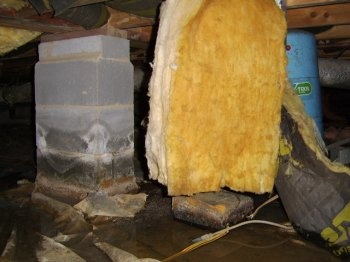
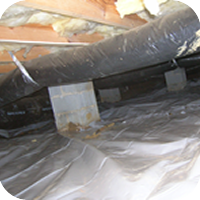

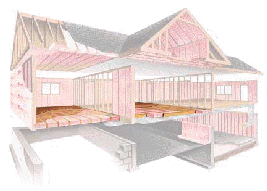
or